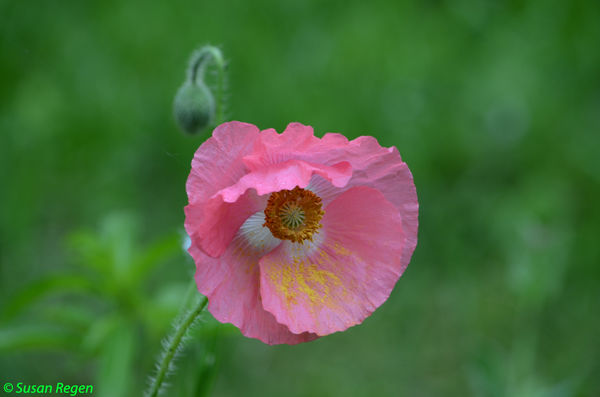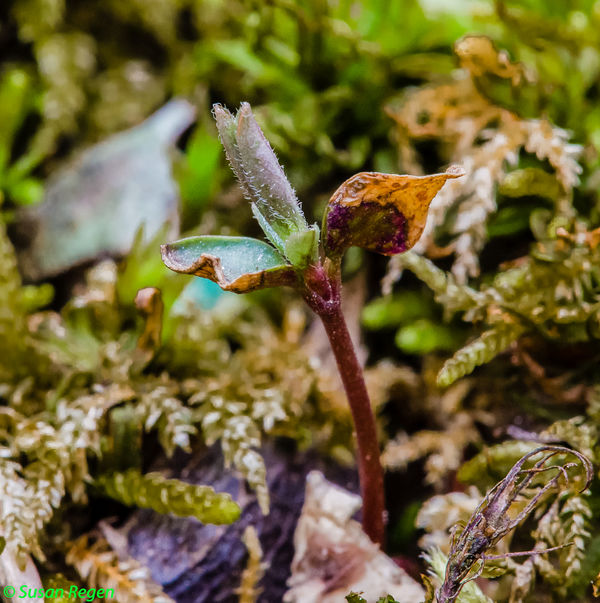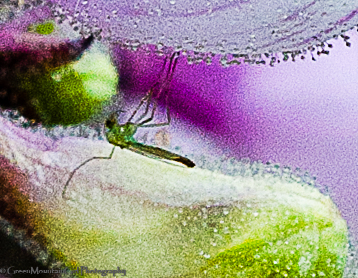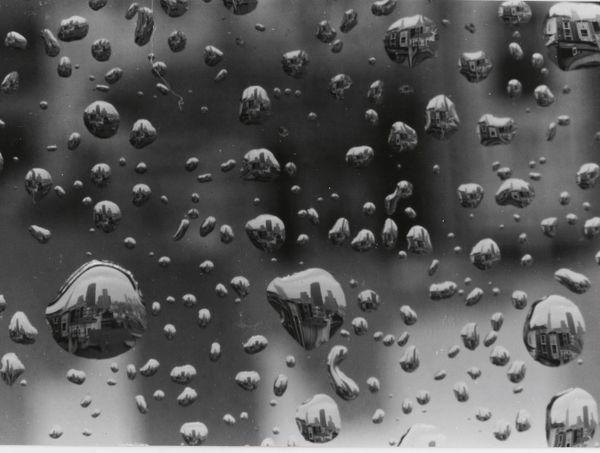Is Macro Photography still necessary - even if popular?
May 31, 2017 07:02:50 #
Linary wrote:
Prg opened a thread regarding bugs and macro photo... (show quote)
Macro Photography brings out amazing detail that you don't see in a normal 1:1 shot. It's a challenge to get the lighting and focus you need.
It's also a great way to spend a cold rainy afternoon, just go buy a bunch of flowers and next thing you know it's time to go to bed and you've got a pile of amazing images.
May 31, 2017 07:05:16 #
In addition to the things mentioned by Scott, I think a big part of the attraction to bug photography is in connecting and interacting with other living things, albeit it very briefly.
May 31, 2017 07:15:00 #
May 31, 2017 08:30:21 #
Linary wrote:
Prg opened a thread regarding bugs and macro photo... (show quote)
For me, macro has nothing to do with challenges, skills, exclusivity of method, or anything EXCEPT a need to make an image of something small. The vast majority of work I do with a macro lens is flat-field copy work, close-ups of machines, video of small moving parts, and general product photography. It's not TRUE macro, except when I'm copying parts of old 35mm slides or negatives.
True macro work is generally regarded as between 1:1 and 10:1 (life size to ten times life size on the sensor or film). MICRO photography is generally at magnifications greater than 10X. CLOSE-UP photography is generally anything less than life size, to perhaps 1:10 or 1:20 (1/10 to 1/20 life size on the sensor or film).
The definitions aren't so important as the quality of the execution. It can be difficult to light, maintain sufficient depth of field, avoid specular reflections, etc.
May 31, 2017 09:18:03 #
I took a macro photograph of a kidney stone, and sent it to my geologist daughter. She couldn't identify it. Didn't talk to me for weeks.....
May 31, 2017 09:18:36 #
mikegreenwald
Loc: Illinois
"A rose by any other name would smell as sweet".
The name game is just that: a game. If you're producing a beautiful image, or an instructive image, or a useful image for some other reason, you have met your goal. Only in the realm of teaching others how to do a particular type of photograph is the label needed.
The name game is just that: a game. If you're producing a beautiful image, or an instructive image, or a useful image for some other reason, you have met your goal. Only in the realm of teaching others how to do a particular type of photograph is the label needed.
May 31, 2017 09:18:52 #
Linary wrote:
What I want to know is what drives a photographer to shoot "true" macro -
Is it because of the challenge?
Is it because of the required skills?
Is it because no other method will give the same results?
Is it something else?
In no way am I disparaging macro photography or its proponents - I know the skill level alone with lighting, focus stacking etc. leaves me out in the cold.
Is it because of the challenge?
Is it because of the required skills?
Is it because no other method will give the same results?
Is it something else?
In no way am I disparaging macro photography or its proponents - I know the skill level alone with lighting, focus stacking etc. leaves me out in the cold.
All of the above.
Linary wrote:
I am well aware of the benefits of using a macro l... (show quote)
The problem of shadows raises a question: what size of macro lens are you using? The shorter the focal length, the closer you need to be to the subject. This is why many photographers use 100mm and up for photographing many subjects such as those pesky bugs. This also helps reduce the shadows problem because the lens is not hovering over the subject. Using a telephoto lens and increasing the camera/subject distance works, too. I call it "pseudo macro", but it is quite a good substitute in many situations!
The poppy flower was taken with a 70-300mm lens at 180mm.
The moss details was taken with a 150mm macro lens. There are many different types of moss, many of which look much the same with the naked eye. Amazing what we find when we look closely!
Even though you do not like bugs, perhaps you won't mind this one - a heavily cropped image of a dead bug on a flower bud. Even at this much cropping, the details are good and you can see the water-droplet coated hairs on the flowers! A good example of the power of macro to show what is difficult to see with the naked eye. I certainly did not notice this bug until I was looking at the image on my computer! Original image taken with the 150mm macro lens.
To conclude, we love to look at the things around us, whether it be the microcosm of our world or the stars above. Photography is a wonderful way to explore and learn.
Poppy Flower

Moss Details

Penstemon Bud with Dead Bug

May 31, 2017 09:38:01 #
True macro photography is a challenge. At true macro lens will focus down to19 inches. A Nikon Macro 105mm / f2.8 lens is an example. A 1:1 ratio on a DX sensor means that an object 16mm x 24mm will fill the sensor. Greater ratios can be obtained by using extension tubes and bellows. There is much to learn about macro photography. Telephoto lens are not the answer.
May 31, 2017 11:09:52 #
Linary wrote:
Prg opened a thread regarding bugs and macro photo... (show quote)
I don't understand your question, not any kind of photography is necessary! But people take pictures, because they love doing it, not out of necessity!
May 31, 2017 11:32:50 #
The reason I prefer to use a macro lens rather than cropping from a long telephoto is that I can make larger prints from the macro image.
May 31, 2017 12:06:41 #
cactuspic
Loc: Dallas, TX
A large part of the discussion depend upon subject size and the amount of detail sought. The nomenclature of macro seemed in many ways arbitrary, as it was different in each of the three systems I used when I started: 4x5, medium format, and 35mm. A 1:1 magnification ratio meant a 5 inch subject (on its long end) for my Sinar, but only but only about a 1 3/8ths subject for my Canon. I there scrapped the idea of "true macro" and looked at how to get the appropriate level of detail from my subjects, many of of which are an inch or less in length. Today I shoot primarilly with my full frame Canon.
In many ways, you are asking a simpler question. In this day of high resolution sensors, do you really need to fill the frame or can you get by with a cropped image? The answer depends on the final use the image, the combined resolution of the sensor/lens combination under the given lighting, and the amount of the crop. In many ways, the situation is akin to a wildlife shooter with a 200mm lens who ponders whether a 400mm or a 600mm lens is required. Will the cropped image reveal sufficient detail for its intended use? Or do I need more pixels on my subject?
If your subject is sufficiently small, has very fine detail, and will be printed large (and if you like to view large prints close-up for the amount of detail they can reveal), then cropping is no substitute for filling the frame. As someone who likes to stick his nose in large prints to see certain details that are lost at normal viewing distances, there is no substitute for macros, particularly focus stacked macros. But that is the artwork I sell. Others will have different needs.
I tried to post a full res jpg so the detail level could be assessed, but apparently the file was too large, even when I clicked "store original."
In many ways, you are asking a simpler question. In this day of high resolution sensors, do you really need to fill the frame or can you get by with a cropped image? The answer depends on the final use the image, the combined resolution of the sensor/lens combination under the given lighting, and the amount of the crop. In many ways, the situation is akin to a wildlife shooter with a 200mm lens who ponders whether a 400mm or a 600mm lens is required. Will the cropped image reveal sufficient detail for its intended use? Or do I need more pixels on my subject?
If your subject is sufficiently small, has very fine detail, and will be printed large (and if you like to view large prints close-up for the amount of detail they can reveal), then cropping is no substitute for filling the frame. As someone who likes to stick his nose in large prints to see certain details that are lost at normal viewing distances, there is no substitute for macros, particularly focus stacked macros. But that is the artwork I sell. Others will have different needs.
I tried to post a full res jpg so the detail level could be assessed, but apparently the file was too large, even when I clicked "store original."
May 31, 2017 13:20:16 #
May 31, 2017 14:40:37 #
lsupremo
Loc: Palm Desert, CA
You create a "macro" image using macro equipment, using macro technique because you NEED to, to get the results you want.
May 31, 2017 14:55:14 #
Linary wrote:
Prg opened a thread regarding bugs and macro photo... (show quote)
Good grief , wouldent it be wonderfull if we all had the same likes and dislikes , that is your answer . , I have no interest in taking pic , of
Bugs and stuff , yet I handled them when I was a kid snakes ,frogs , spiders handled them all , maybe that is why they never interested me in later years .
May 31, 2017 14:58:58 #
lsupremo
Loc: Palm Desert, CA
What the subject matter is has nothing to do with the definition of macro. It only has to do with the process.
If you want to reply, then register here. Registration is free and your account is created instantly, so you can post right away.





